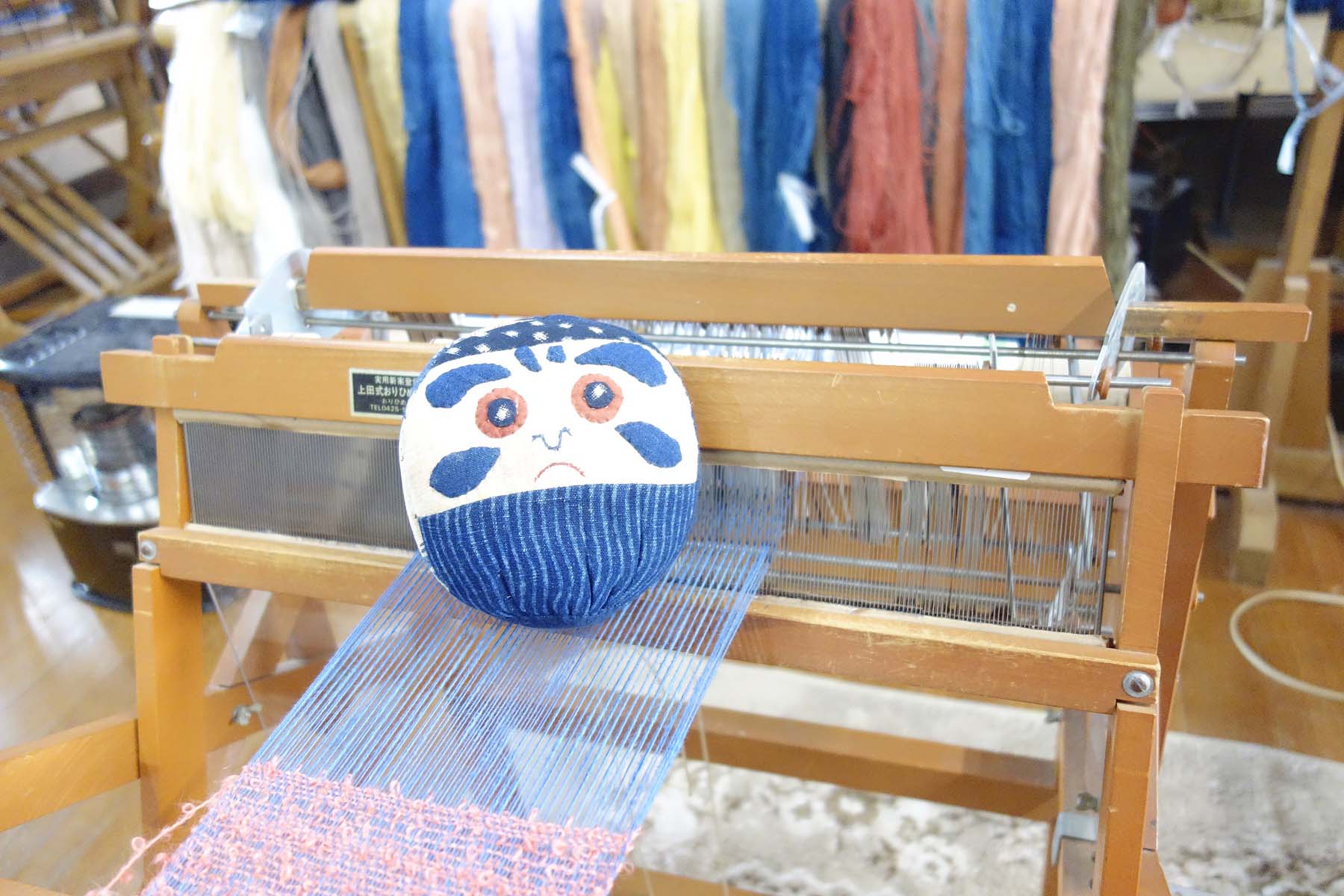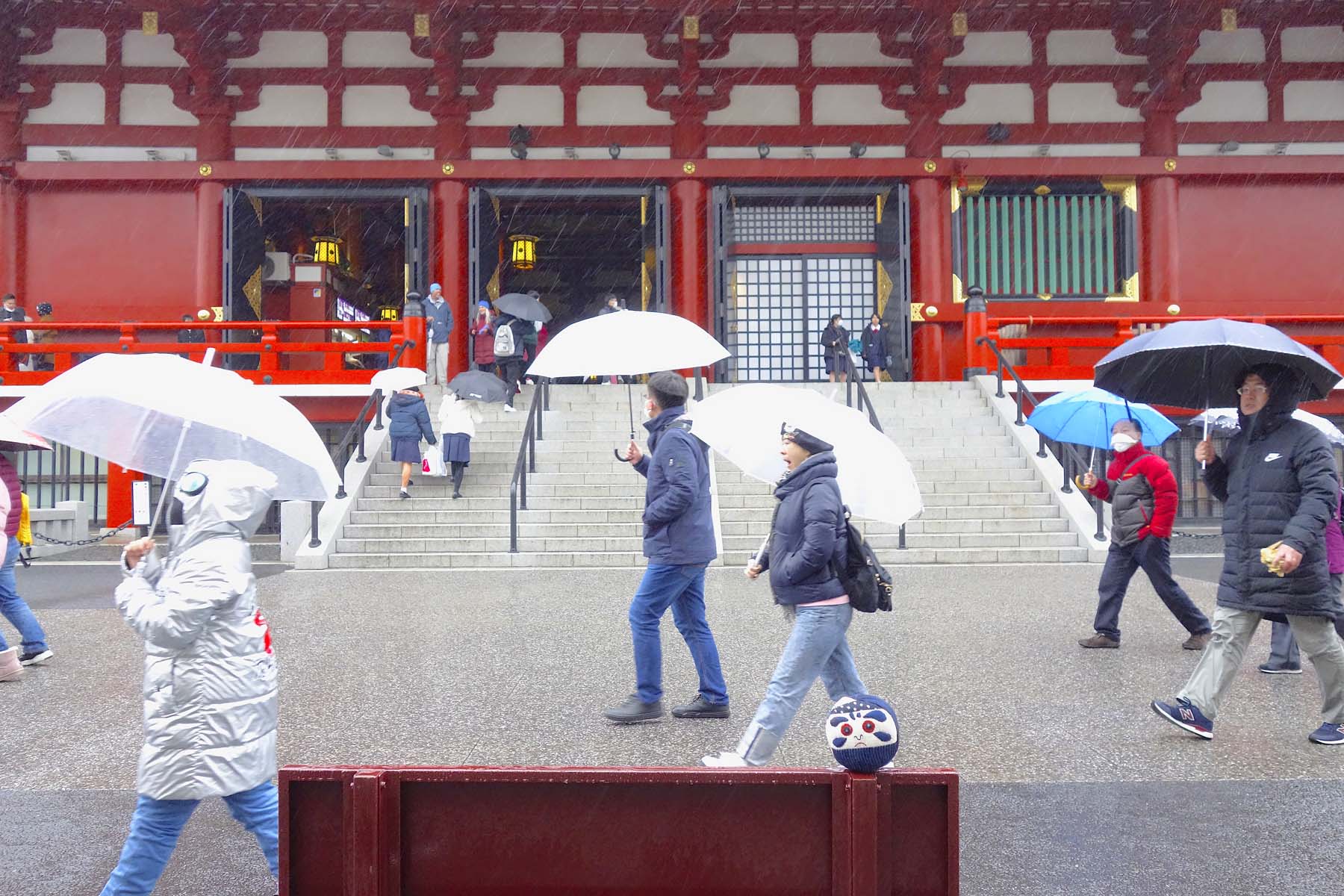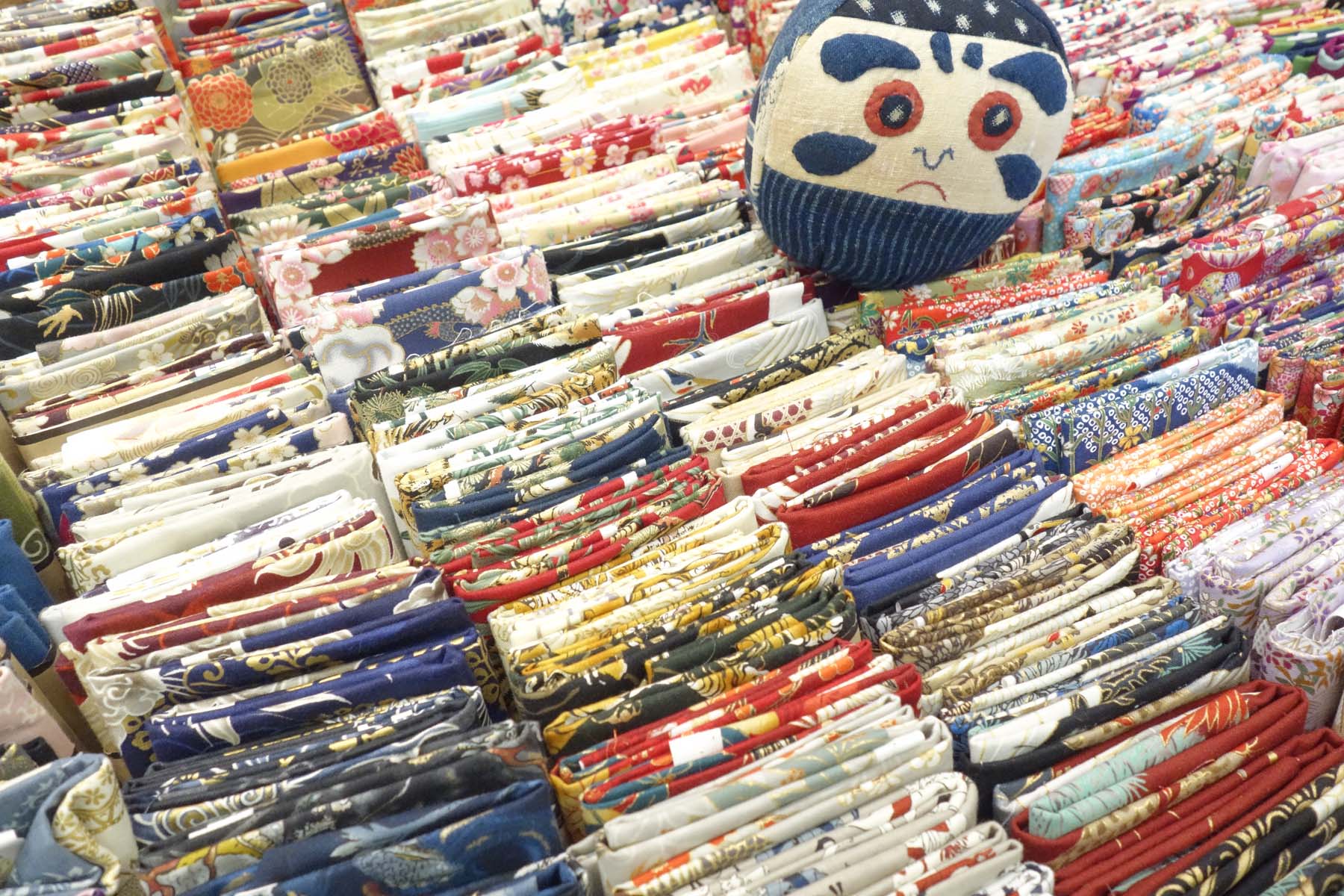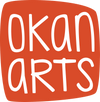To book an upcoming textile tour to Japan with Okan Arts +click here
By Patricia Belyea
JAPAN Daruma just got back from a whirlwind trip with Okan Arts 2020 Tokyo Quilt Festival & Japanese Textile Tour.
The tour started with two days at the Great International Quilt Festival. As much as he appreciated the quilt exhibits, Daruma had lots of fun getting lost in the special exhibits and meeting young people.



When the tour headed to Nippori Fabric Town, Daruma’s favorite shop was River Stone with its vintage kimono, obi, and Japanese fabrics. He wasn’t the only one who got carried away buying the luscious dyed and woven cottons, silks, and wools.

North of Tokyo, Daruma attended a chusen-dyeing workshop with sensei Sanae Naito. Cotton for tenugui was protected with a special resist and then dyes were poured through the fabric.
Next door, Daruma found a shop brimming with colorful tenugui for sale. Daruma took no time in finding the tenugui he wanted to buy.




A visit to Amy Katoh’s home to learn about her remarkable textile collection captured Daruma’s heart. He was entranced by all the folk art fabrics and real boro pieces.
At Amy’s shop, Blue & White, Daruma was introduced to Otafuku—the charming goddess of mirth. Alas, Otafuku would have nothing to do with him.



A coach ride to the village of Hinohara brought Daruma to the Sashiko Museum. The experience was so moving that Daruma didn’t get an in-focus photo of Akie Ginza, the famed needlework expert. At 89, Akie welcomed everyone to her home filled with her life’s work of “little stabs.”


On a beautiful clear day, Daruma coached to Hawaguchiko to see the Kubota Itchiku Museum. The view of Mt. Fuji from the Museum, covered with a full blanket of snow, was stunning. But not so stunning as Kubota’s silk kimono, dyed with the patience-demanding Itchiku Tsujigahana technique. The display made Daruma speechless with its beauty, color, and radiance.
No photos were allowed in the Museum, so Daruma had his picture taken on the steps outside. A playful wind picked him up and tumbled him into rushing ice-cold water nearby. Watch out Daruma! Don't fall over the little cliff into the grotto!


That evening, at a ryokan (traditional Japanese inn) in the resort town of Hakone, Daruma changed into a cotton yukata and warmed up in the mineral hot springs downstairs. (No photos allowed there, as well.)

On the way to Kyoto, the tour took Daruma to the birthplace of shibori dyeing—the village of Arimatsu. At the Narumi Tie-Dyeing Museum, Daruma studied a young lady industriously knotting white cotton for shibori dyeing a parasol.
Across town, at the studio of shibori expert Tsuyoshi Kuno, Daruma managed to stay out of the dye pots as the whole group experienced itajime. Large furoshiki (wrapping clothes) were folded, clamped, and then dyed with three colors.




Once settled into his plush hotel in Kyoto, Daruma’s first stop was Misuyabari needle shop. Over 360 years ago, this family business supplied the imperial tailors with handmade needles. Today, the hard-to-find shop offers a full selection of samurai-sharp needles, pin cushions, sewing scissors, and more.

A tour of the Kyoto textile district included Somé Seiryukan, a museum dedicated to dyeing; and Nishijin Textile Center, a regional center with a museum, vintage kimono store, gift shop, and kimono fashion show. This weaver at the Textile Center explained that today the average age of Kyoto weavers is 70- to 80-years old!

A day trip to the farming village of Ohara introduced Daruma to botanical dyeing. At Ohara Kobo, Daruma watched as silk scarves were tied up and dipped into vats of natural indigo and hot pots of madder and marigold.




Across Kyoto at Roketsu Dyeing Studio, Daruma was mesmerized by tour participants brushing hot wax onto white noren, t-shirts, and book bags. The projects were crushed to crackle the wax and then dipped into a dark-blue indigo vat. Happy Jun Yamamota directed the creative hubbub to ensure that everyone had a great time and a successful project.



Daruma’s tour included more than textile delights: a rainy afternoon at Sensoji, Tokyo’s oldest temple; a walk around Jindaiji, known as the Soba Temple; a festival day at Sanzenin, with jizo popping out of moss gardens; a hike up Fushimi Inari Shine, the legendary mountain with ten thousand torii; and more.




And, of course, there was shopping—lots of shopping for traditional treats like crisp rice crackers and candied yuzu peel, plus more contemporary goods!




The story of the tour would not be complete without saluting Yumiko Sugai—the best Japanese tour guide ever. Yumi brought sunshine and magic wherever she went. Daruma loved her enthusiasm and knowledge, plus her generous spirit.

Daruma was made by Reiko Okunushi. She’s been making objects of delight for Blue & White for over 40 years!
# # # # #
ABOUT US: Okan Arts, a petite family business, is co-owned by mother-daughter duo Patricia Belyea and Victoria Stone. Patricia and Victoria sell Japanese textiles online, host creative quilting experiences, and lead quilting & textile tours to Japan.
FOLLOW OKAN ARTS ON INSTAGRAM @okanarts









